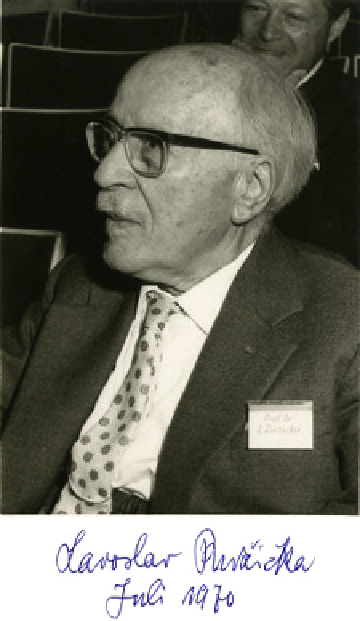Biology Reference
In-Depth Information
essential information as they comprise the bulk of a membrane's hydrophobic interior. The
thin oily center of a lipid bilayer is responsible for basic membrane properties and stability.
It constitutes the diffusion barrier and provides the proper environment for membrane
protein activity (see Chapter 6). Determining membrane fatty acid composition is therefore
an essential component of membrane studies and their analysis is usually achieved by gas
chromatography (GC) or more properly gas-liquid chromatography (GLC).
Gas chromatography (GC) is used to separate and identify compounds that can be vapor-
ized without decomposing
[28]
. GC was first described by the Russian scientist Mikhail
Semenovich Tswett in 1903 and was fully developed as gas-liquid chromatography in 1950
by the 1952 Nobel Laureate A.J.P. Martin (
Figure 13.9
), the pioneer of liquid
liquid and
paper chromatography. The basic principle for GC is analogous to that of TLC and HPLC
with a few very important differences. In GC the mobile phase is a carrier gas and the ana-
lytes partition between an immobile liquid stationary phase and a mobile gas phase. This
accounts for the more correct term gas-liquid chromatography. The carrier gas is usually
an inert gas like helium or an unreactive gas like nitrogen. The stationary phase is a thin
coating of various materials lining the inside of a long thin tube referred to as a column.
The most common stationary phase used in fatty acid analysis is Carbowax (polyethylene
e
FIGURE 13.9
A.J.P. Martin (1910
e
2002).
Courtesy of International Autograph Auctions Ltd.


